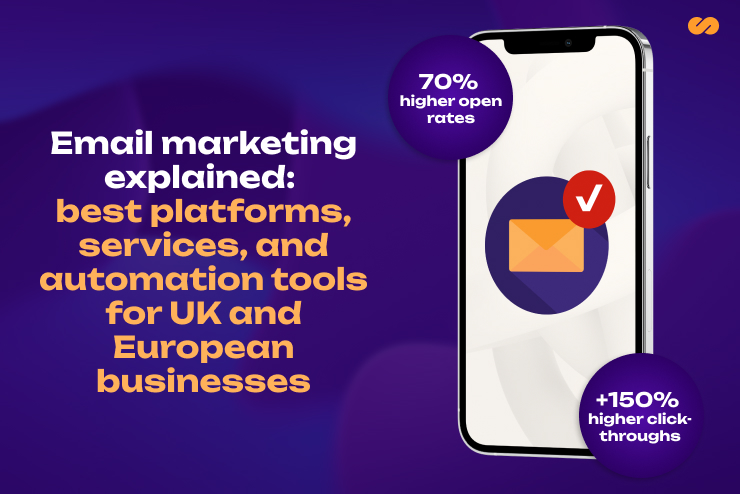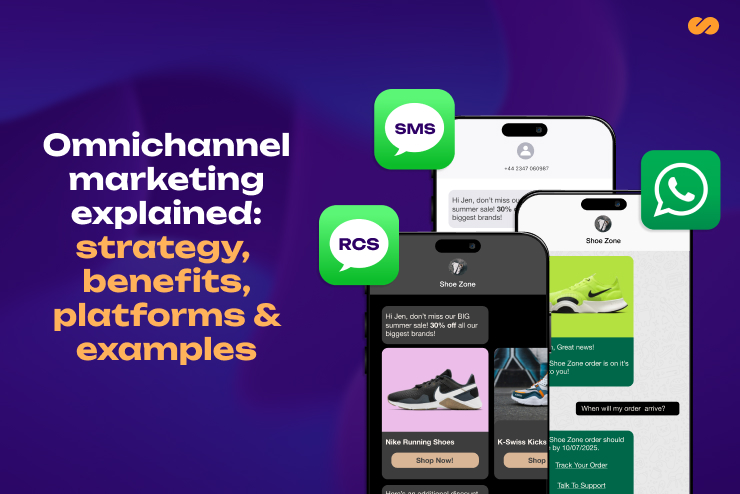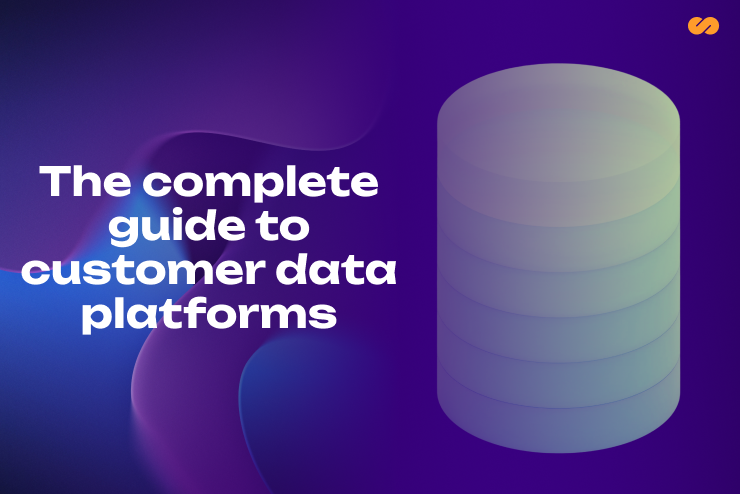What Is Customer Identity Resolution? A Practical Guide for UK and EU Retailers
Turning Anonymous Visitors into Revenue

Struggling to understand who’s visiting your site, engaging with your emails, or abandoning journeys before they convert? You’re not alone. In the UK and EU, up to 98% of eCommerce traffic comes from anonymous visitors, leaving retailers with fragmented data, unclear journeys, and missed revenue opportunities.
As consumer journeys become increasingly complex, shoppers switch effortlessly between websites, mobile apps, social media, and physical stores, often multiple times before buying. But while this creates more opportunities to engage, most of these touchpoints are disconnected, making it difficult to link behaviour, personalise experiences, or track intent.
That’s where customer identity resolution comes in. By using identity resolution software to unify behaviour across channels, UK and European retailers can identify up to 70% of previously anonymous traffic and increase conversions by 15% to 30%.
In this guide, we’ll break down how identity resolution works, why it's critical for retail growth, how to choose the right platform, and how leading UK and EU brands are turning unknown visitors into loyal customers and measurable revenue.
What is Customer Identity Resolution and How Does it Work
Customer identity resolution is the process that helps retailers recognise the same person across different devices, channels, and sessions. Whether someone visits your website on mobile, clicks an email on desktop, or browses in-store, identity resolution connects those actions into a single customer profile that can be used for personalisation and marketing.
Why Customer Identity Resolution Matters
Instead of treating every touchpoint as separate, customer identity resolution links browsing activity, app logins, email clicks, in-store purchases, and loyalty programme interactions into one consistent view. This allows retailers to understand behaviour, personalise experiences, improve targeting, and increase revenue.
For UK and European businesses, identity resolution must also operate within GDPR requirements, ensuring transparency, consent, and privacy-first data practices.
How Customer Identity Resolution Works
Every interaction leaves behind identifiers such as email addresses, device IDs, phone numbers, session data or loyalty card numbers. On their own, these signals are incomplete. Identity resolution software analyses and connects them, turning fragmented behaviour into a complete and actionable customer profile.
The Technology That Powers Identity Resolution
These profiles are created using a mix of advanced technologies that ensure accuracy, scalability, and compliance.
What is an Identity Graph
An identity graph acts as the central database that links together all known and anonymous identifiers to form a dynamic customer profile.
- First-party graphs use your own customer data and are fully GDPR-compliant.
- Second-party graphs enrich profiles using trusted partner data.
- Third-party graphs expand reach but are becoming more restricted in Europe due to privacy regulations.
Deterministic vs Probabilistic Matching Explained
Data matching methods determine how identifiers are connected.
- Deterministic matching connects identifiers when there is an exact match, such as the same email used across channels.
- Probabilistic matching uses behavioural patterns and algorithms to predict likely matches when identifiers are less clear.
How AI Improves Identity Resolution Accuracy
AI enhances the process by detecting patterns across large datasets and improving match accuracy over time. Machine learning helps refine customer profiles, making it easier to engage individuals with relevant messages at the right time in their journey.

The Revenue Impact of Identity Resolution in the UK and Europe
Identity resolution is now a direct driver of revenue growth across the UK and Europe. In the UK alone, 266 enterprises generated £2.1 billion in digital identity-related revenue between 2023 and 2024, with the market expected to reach £8.7 billion by 2033 at a 15.7% annual growth rate. Spain is following suit, with its digital identity solutions sector forecast to grow at 18.1% CAGR and hit USD 866.93 million in 2024.
This rapid growth is more than a trend. Businesses that can recognise and reconnect with users earlier in the journey are seeing higher conversion rates, improved personalisation, and reduced spend on inefficient campaigns. In competitive European markets where customer loyalty is fragile and privacy rules are strict, identity resolution gives retailers the insight needed to link behaviour to revenue.
Put simply, retailers that can accurately identify customer journeys are more likely to recover lost sales, improve retention, and outperform slower-moving competitors.
Best Identity Resolution Tools and Software for UK and EU Retailers
Not all identity resolution platforms are created equal. Some focus on enterprise-level data ecosystems, others support marketing teams, and a few lead with privacy and compliance. For UK and European retailers, success depends on choosing a platform that balances commercial impact with regulatory responsibility.
SaleCycle: Real-Time Identification with Measurable ROI
Most visitors leave websites without identifying themselves, creating a huge gap in customer understanding. SaleCycle solves this by resolving up to 70% of anonymous website visitors into identifiable profiles in real time, helping brands improve conversion rates and reactivation performance.
It operates through three core modules:
- Reach collects behaviour and audience signals in a fully GDPR-compliant way without relying on third-party cookies.
- Retain interprets intent and behaviour to deliver deeper personalisation.
- Re-engage supports abandoned cart recovery and customer loyalty campaigns.
Together, these modules help retailers turn unknown traffic into revenue-driving opportunities.
Seamless CRM Integration for Faster Deployment
One of SaleCycle’s key strengths is frictionless integration. It connects natively with major CRMs like Salesforce, HubSpot and Adobe, reducing deployment time by up to 60% and enabling customer profiles to be shared across touchpoints instantly.
Other Leading Providers in the UK and EU
Retailers operating at scale may also consider:
- Experian Consumer Sync, Merkle, LiveRamp: Built for large-scale enterprise identity ecosystems.
- Segment, FullContact, Hightouch: Focus heavily on marketing campaign unification.
- Okta Identity Resolution and Acxiom: Specialise in compliance and authentication-led identity frameworks.
Whether these platforms use deterministic matching, probabilistic modelling or API-led streaming, the key is ensuring privacy safeguards such as hashing, consent governance and regulatory alignment are embedded by design.
Why Compliance Comes First
For UK and European organisations, effective identity resolution is not just about scale or accuracy; it must also be compliant. With GDPR at the core of digital trust, privacy-focused frameworks are now a strategic differentiator. That’s why the next section explores how GDPR-led practices build stronger customer relationships and reduce regulatory risk.
GDPR-Compliant Identity Resolution: How UK and EU Retailers Build Trust
Privacy is now a key competitive advantage in the UK and Europe. With GDPR reshaping digital engagement, identity resolution platforms must enhance customer insight without compromising consent or trust.
Regulatory Alignment and Customer Transparency
Modern identity platforms now use consent layering, allowing customers to grant different permissions for different types of data. Progressive profiling is also used to gather data gradually instead of requesting everything upfront, improving opt-in rates by up to 60%..
In the UK and EU, GDPR remains the governing standard, supported by IAB Europe’s Transparency and Consent Framework and other industry-led ethical data guidelines.
Technologies and Best Practices for Privacy Protection
Leading solutions use a range of privacy-first features, including:
- Cryptographic hashing to anonymise personally identifiable information.
- Consent management platforms (CMPs) to ensure data reflects individual preferences.
- Data minimisation to reduce exposure and maintain only essential information.
- Privacy by design to embed compliance into the system architecture from the outset.
Trust as a Growth Lever
Retailers that implement privacy-first identity resolution are not just meeting regulations; they are earning customer confidence, enhancing engagement, and accelerating conversions. With a trusted foundation in place, businesses can move confidently into building richer, more personalised customer journeys.
How Identity Resolution Transforms the Customer Journey for UK and EU Retailers
Identity resolution goes beyond data matching. It gives retailers the power to identify anonymous website visitors, personalise engagement in real time and drive higher revenue across the full customer journey. By converting unknown audience signals into actionable insights, retailers can boost conversions, improve retention and build more meaningful long-term relationships.
Driving Revenue with Identity Resolution
One of the quickest wins is reducing cart abandonment. When retailers can recognise shoppers who previously remained anonymous, they can expand their retargeting pool by up to 70% and re-engage them with personalised campaigns that increase abandoned cart recovery rates.
Identity resolution also improves cross-channel attribution by clearly showing which touchpoints contribute to conversion. Retailers typically reduce wasted ad spend by 25% to 40% and scale investment into their highest-performing channels.
When customer data is unified, personalisation becomes significantly more effective. Businesses that implement dynamic, identity-driven personalisation strategies report conversion rate increases of 15% to 30%.
Beyond Marketing: Wider Commercial Impact
Fraud Prevention and Risk Control
Financial institutions use identity resolution to analyse behaviour across multiple devices and channels, reducing false positives by up to 45% while increasing real fraud detection accuracy.
Customer Support Efficiency
Support teams benefit from access to full behavioural histories, leading to faster resolution times and a 25% lift in customer satisfaction.
Product and CX Improvements
With anonymous website visitor tracking, product teams gain insights into how users behave before converting, enabling them to spot friction points and drive data-led feature optimisation.
Real Success Stories with SaleCycle
LATAM Airlines used identity resolution to fuel hyper-personalised remarketing campaigns. Tailored cart recovery emails referencing abandoned flight routes, supported by seasonal countdown campaigns during peak events like Black Friday, led to higher click-through and booking rates.
A leading eCommerce retailer linked household-level behaviours to deliver more relevant recommendations. The result was a 23% lift in average order values and stronger cross-device recovery performance.
A financial services provider enhanced fraud detection by analysing device identity and behavioural fingerprints, reducing false alerts by 35% and improving customer trust.
From increased conversions to fraud reduction, identity resolution delivers both short-term and long-term returns. The next step is understanding how to implement it effectively within UK and European businesses and how to prepare for future shifts in digital customer engagement.
How to Implement Identity Resolution: A Step-by-Step Guide for UK and EU Retailers
Identity resolution is not just a technology rollout; it is an operational strategy that helps retailers transform disconnected customer signals into usable intelligence. When executed correctly, it boosts ROI, fuels personalisation and ensures regulatory alignment in the privacy-first UK and EU market.
Step 1: Audit Your Data and Define Clear Use Cases
Begin by assessing your current data environment. Review all existing customer touchpoints, including website sessions, email activity, mobile apps and in-store transactions. Check for inconsistencies and gaps.
Then define specific business goals. Whether your priority is improving personalisation, reducing marketing waste or strengthening fraud detection, clear objectives will shape your roadmap and help prove quick wins internally.
Step 2: Build Insights and Measure ROI with Unified Profiles
Once profiles are unified, retailers can move beyond outdated last-click attribution. Multi-touch models reveal which touchpoints truly influence purchases, helping reallocate spend more effectively.
Platforms such as SaleCycle enable retailers to build attribution models tailored to their real customer journeys. Businesses that act earlier on high-intent customer behaviours often see a 25% to 35% increase in lifetime value.
Step 3: Roll Out in Phases for Faster Time to Value
Phase 1: Foundation
- Connect core databases
- Apply deterministic matching using known identifiers
Phase 2: Intelligence
- Add probabilistic matching powered by AI
- Identify previously anonymous profiles for personalisation
Phase 3: Activation
- Push identity data into marketing, ad, CRM and CX platforms
- Enable real-time targeting, attribution and personalisation
A phased approach minimises disruption, accelerates ROI and supports internal adoption across marketing, analytics, and customer experience teams.
The Future of Identity Resolution in the UK and Europe: Trends Retailers Must Prepare For
Identity resolution is rapidly evolving in response to shifting consumer expectations and tighter regulations across the UK and Europe. Several emerging trends are shaping the next generation of solutions:
AI-driven accuracy: Machine learning models are becoming more advanced in linking profiles across sessions, devices and behavioural patterns.
Privacy-first and cookieless identity: With GDPR and the decline of third-party cookies, first-party consented identity has become essential.
Real-time personalisation: Shoppers expect instant relevance, from website experiences to triggered communications.
Greater integration with CX and security stacks: Identity will no longer sit only in marketing technology but power fraud risk scoring, retention strategies and customer service.
Retailers who adopt these capabilities early will be positioned to deliver seamless, compliant experiences that build deeper loyalty and long-term growth.
Driving Growth with Identity Resolution: How UK and EU Retailers Gain a Competitive Advantage
As identity resolution becomes a foundation of customer engagement, the real question is not whether to use it, but how to implement it in a privacy-first, future-ready way. Businesses that act early can connect fragmented interactions into a seamless customer journey, improve conversion rates, and build long-term trust across devices and channels.
Identity resolution is now essential. It powers personalisation, improves marketing efficiency, and ensures compliance in a world shaped by GDPR and evolving customer expectations. Retailers who move now secure a measurable lead in customer loyalty and revenue growth.
SaleCycle's customer identity resolution platform identifies up to 70% of previously anonymous visitors in real time, helping businesses increase their addressable audiences while remaining GDPR-compliant. This leads to stronger conversion rates, reduced acquisition costs, and more meaningful customer relationships. Explore SaleCycle’s identity resolution solutions to evaluate your current data strategy and unlock new growth opportunities.
Frequently Asked Questions About Identity Resolution
What is identity resolution software?
It is a technology that unifies customer data from various touchpoints to create a single, comprehensive profile, transforming anonymous website visitors into known individuals.
How does identity resolution boost my revenue?
It enables hyper-personalisation, improves marketing attribution, and accelerates lead nurturing, which drives higher conversions and customer lifetime value.
Does identity resolution software protect customer privacy?
Yes. Modern identity resolution software prioritise privacy and compliance with regulations like GDPR, using best practices to protect data and respect user consent.
How does SaleCycle compare to other software?
SaleCycle integrates seamlessly with your CRM and focuses on a privacy-first approach to turn anonymous traffic into tangible customers, setting it apart in the market.
How is identity resolution optimised for AI and voice search?
The software is designed to provide concise, structured answers to questions, using natural language and schema markup. This makes it ideal for AI overviews and voice search responses.
What is the difference between deterministic and probabilistic matching?
Deterministic matching uses direct identifiers like email for high-certainty matches. Probabilistic matching uses algorithms to infer identity based on behaviours for anonymous users.
Is identity resolution only for marketing?
No. It has advanced applications beyond marketing, including optimising the customer journey and enhancing overall business intelligence with unified data.
How is an identity resolution strategy implemented?
Begin by assessing data and defining the strategy. Implement in stages to measure ROI and gradually optimise customer insights for seamless integration.
Why is it advantageous to use identity resolution now?
With rising customer expectations, the decline of third-party cookies, and the growth of AI-driven search, identity resolution is crucial for gaining a competitive edge.





